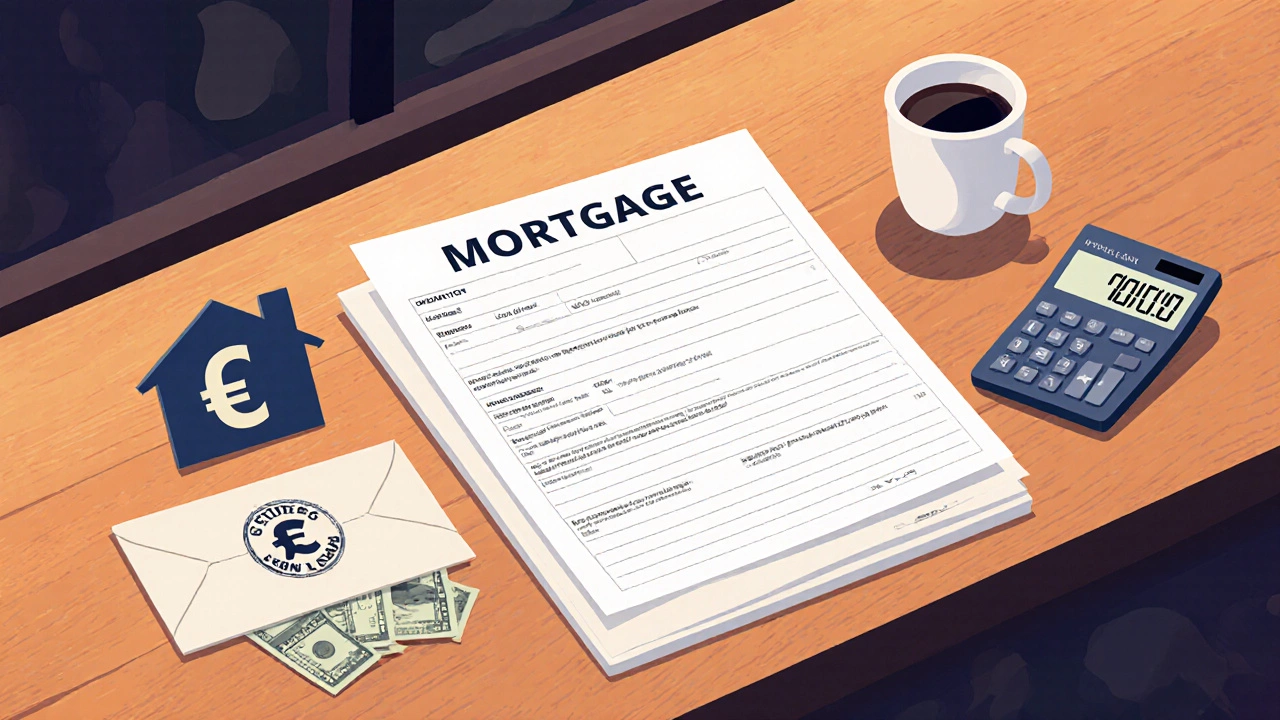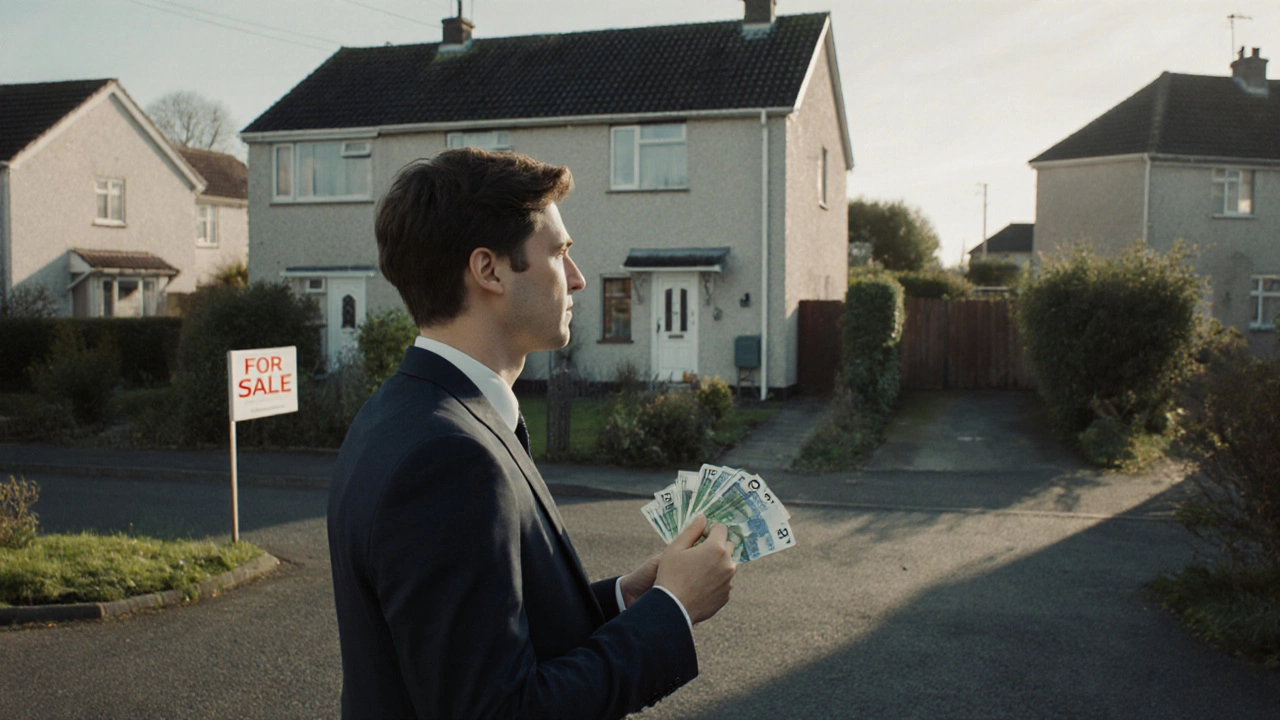Quick Takeaways
- With a €40,000 gross salary you can typically qualify for a mortgage up to €120,000-€150,000, depending on debt load and down‑payment.
- Student loan repayments eat into your monthly cash flow; a €5,000 loan at €200/month cuts your affordable house price by roughly €20,000.
- Put at least 10% down (≈€20,000) to keep the loan‑to‑value (LTV) at 90% and stay within the 43% debt‑to‑income (DTI) ceiling used by Irish lenders.
- Don’t forget extra costs: €20,000‑€30,000 for stamp duty, legal fees, insurance, and Local Property Tax.
- Boost buying power by reducing other debts, increasing the down payment, or locking in a lower interest rate.
Understanding Affordability Basics
Affordability isn’t just about the listing price. Lenders look at three pillars:
- What you earn - your salary gross annual income before tax.
- What you owe - existing debts like student loans post‑secondary debt that requires monthly repayment.
- What you can put down - the down payment cash you contribute upfront, usually 10‑20% of the purchase price.
Irish banks apply a maximum debt‑to‑income ratio (DTI) percentage of gross income that can go toward all debt repayments of about 43%.
How Salary Translates to Monthly Cash Flow
A €40,000 gross salary in 2025 translates to roughly €2,800 net per month after PAYE tax, USC, and PRSI. That figure is your starting point for the affordability equation.
Break it down:
- Net monthly income: €2,800
- Maximum monthly debt service (43% of net): €1,204
Everything you owe - mortgage, student loan, car payment, credit‑card minimums - must fit inside that €1,204 ceiling.
Factoring In Student Loan Payments
Student loan balances vary, but the average Irish graduate in 2025 carries about €5,000 in debt. The repayment threshold is €19,000 annual income, with a rate of 4% of earnings above the threshold.
For a €40,000 salary, that works out to roughly €200 per month:
- €40,000 - €19,000 = €21,000 excess
- 4% of €21,000 = €840 annually → €70 monthly
- Additional voluntary repayment (common) adds ~€130 → total €200/month
Subtracting €200 from the €1,204 debt budget leaves €1,004 for a mortgage payment.

Mortgage Qualifications in Ireland
When lenders calculate how much they’ll lend, they consider:
- Interest rate annual rate on a mortgage; 5.5% is typical for a 30‑year fixed loan in 2025.
- Loan‑to‑value (LTV) ratio - the percentage of the house price covered by the mortgage. A 90% LTV means you need a 10% down payment.
- Maximum DTI - banks usually cap it at 43% of gross income, but some may allow up to 45% with strong credit.
Using the €1,004 monthly budget, a 5.5% rate, and a 30‑year term, the mortgage calculator shows a loan amount of about €130,000.
Running the Numbers: A Step‑by‑Step Calculator
- Calculate net monthly income from your gross salary (≈70% in Ireland). For €40,000 gross, net ≈€2,800.
- Determine the DTI ceiling (43% of net): €1,204.
- Subtract all non‑mortgage debts. Example: student loan €200, credit‑card €50, car loan €100 → €350 total.
- Remaining amount for mortgage = €1,204 - €350 = €854.
- Plug €854, 5.5% rate, 30‑year term into a mortgage calculator. Result ≈ €115,000 loan.
- Add your down payment. With a 10% down payment on a €200,000 house, you need €20,000 cash.
- Total purchase price you can afford = loan + down payment = €115,000 + €20,000 = €135,000.
In this realistic scenario, a €200,000 house would be out of reach unless you either increase the down payment, reduce other debts, or secure a lower interest rate.
Side‑by‑Side Scenarios
| Down‑Payment | Interest Rate | Maximum Mortgage | Affordable House Price |
|---|---|---|---|
| 10% (€20,000) | 5.0% | €130,000 | €150,000 |
| 10% (€20,000) | 5.5% | €115,000 | €135,000 |
| 20% (€40,000) | 5.0% | €130,000 | €170,000 |
| 20% (€40,000) | 5.5% | €115,000 | €155,000 |
Notice how a larger down‑payment shrinks the loan needed and lets you stay under the DTI limit even at a higher rate.
Hidden Costs You Can’t Ignore
Even if the mortgage fits your budget, the total cash needed at closing is often 15‑20% of the purchase price.
- Stamp duty 10% on the first €1million of residential value in Ireland - €20,000 on a €200,000 home.
- Legal & conveyancing fees typically €1,500‑€2,500.
- Local Property Tax (LPT) annual tax based on property value, approx. €600‑€800 for a €200k house.
- Home insurance covers building and contents; average €400‑€600 per year.
- Valuation fee (€150‑€300) and mortgage arrangement fee (often 0.5% of loan).
All together, you’ll likely need an extra €25,000‑€30,000 on top of the down payment.
Tips to Boost Your Buying Power
- Pay down high‑interest credit‑card balances before applying.
- Consider a government‑backed Help‑to‑Buy scheme - it can cover up to 20% of the purchase price for first‑time buyers.
- Shop around for the lowest interest rate; a 0.5% drop can add €5,000‑€7,000 to your affordable price.
- Increase your down payment by saving a bonus, tax refund, or using a joint‑saver account with a partner.
- Lock in a fixed rate early in the year when the Central Bank’s policy rate is low.
Remember, the goal isn’t just to get a mortgage approval - it’s to stay comfortable after you move in.
Frequently Asked Questions
Can I buy a €200k house if I have a €5k student loan?
Yes, but only if you can either increase your down payment, reduce other debts, or secure a lower mortgage rate. With a €200/month student‑loan payment, you’d likely qualify for a loan around €115k, which means you’d need a larger deposit or a cheaper property.
How much should I set aside for closing costs?
Plan on 15‑20% of the purchase price. For a €200k home, that’s roughly €30,000 covering stamp duty, legal fees, LPT, insurance, and mortgage fees.
What DTI ratio do Irish banks use?
Most banks cap the total debt‑to‑income ratio at 43% of gross income, but some allow up to 45% for borrowers with excellent credit histories.
Is a 30‑year fixed mortgage still available in Ireland?
Yes, although many lenders now offer 25‑year terms as the most common product. Fixed rates for 30‑years are usually slightly higher.
Should I use a mortgage calculator or a spreadsheet?
A mortgage calculator is great for quick estimates, but a spreadsheet lets you model multiple scenarios - like varying interest rates, down payments, and extra debt repayments - giving you a clearer picture of affordability.
Bottom line: on a €40,000 salary you can comfortably handle a mortgage that’s roughly 2.5‑3times your annual income, once you factor in student loans and hidden costs. That translates to a house price between €130,000 and €155,000 with a sensible down payment. Anything beyond that will stretch your budget unless you can boost cash reserves or shave off debt.
mortgage affordability hinges on realistic numbers, not wishful thinking. Run the steps above, check the scenario table, and you’ll know exactly where you stand before you start house‑hunting.
